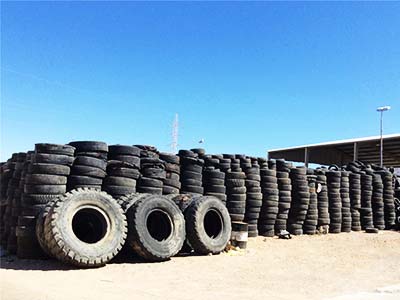Introduction
Tire pyrolysis, a cutting-edge technology in waste management, holds the promise of transforming discarded tires into valuable resources while mitigating environmental pollution. This article explores the intricacies of tire pyrolysis, delving into its process, benefits, and eco-friendly attributes.
Understanding Tire Pyrolysis
Tire pyrolysis is a thermochemical process that involves the decomposition of rubber tires at high temperatures in the absence of oxygen. Through waste tire pyrolysis plant, tires are converted into valuable products such as pyrolytic oil, carbon black, and steel wire. The process harnesses the principle of controlled heating to break down complex polymer chains within tires, resulting in the formation of useful end products and reducing the volume of waste destined for landfills or incineration.

Eco-friendly Attributes of Tire Pyrolysis
1. Waste Reduction
Tire pyrolysis offers a sustainable solution to the growing problem of tire waste accumulation. By converting discarded tires into valuable commodities, such as fuel oil and carbon black, pyrolysis reduces the burden on landfills and minimizes the environmental impact of tire disposal. This waste reduction aspect of tire pyrolysis contributes to the conservation of natural resources and the preservation of landfill space. Check a high efficiency continuous pyrolysis equipment here.
2. Energy Recovery
One of the key benefits of tire pyrolysis is the recovery of energy-rich products from waste tires. Pyrolytic oil, a liquid fuel derived from tire pyrolysis, can be utilized as a renewable energy source in various applications, including heating, electricity generation, and industrial processes. By harnessing the energy content of waste tires through pyrolysis, we can reduce reliance on fossil fuels and mitigate greenhouse gas emissions associated with traditional energy sources.
3. Valorization of By-products
In addition to producing fuel oil, tire pyrolysis yields valuable by-products such as carbon black and steel wire. Carbon black, a high-performance carbonaceous material, finds applications in rubber manufacturing, plastics, ink production, and construction materials. The recovery of carbon black through tire pyrolysis not only diverts waste from landfills but also promotes resource efficiency and circularity in the manufacturing sector. Similarly, the extraction of steel wire from tires allows for its recycling and reuse in various industries, further enhancing the sustainability of tire pyrolysis processes. Also, you can find plastic pyrolysis plant here.
4. Environmental Remediation
Beyond waste reduction and energy recovery, tire pyrolysis contributes to environmental remediation efforts by addressing the environmental hazards associated with tire disposal. Improperly disposed tires can serve as breeding grounds for pests, contribute to air and water pollution, and pose fire risks in landfills. By diverting tires from conventional disposal methods and converting them into useful products, tire pyrolysis mitigates these environmental risks and fosters a cleaner, healthier environment for communities.
Conclusion: Embracing Sustainable Solutions
In conclusion, tire pyrolysis represents a compelling example of eco-friendly innovation in waste management. By harnessing the power of controlled heating and chemical transformation, tire pyrolysis offers a pathway to waste reduction, energy recovery, and resource valorization. As societies strive to transition towards a circular economy and mitigate the environmental impact of waste generation, technologies like tire pyrolysis emerge as valuable tools in the quest for sustainability. By embracing these innovative solutions and supporting initiatives that promote resource efficiency and environmental stewardship, we can pave the way towards a greener, more sustainable future for generations to come. Welcome to visit Beston Group to get more related information.